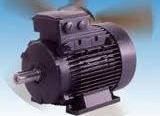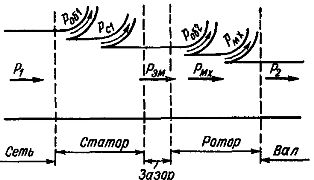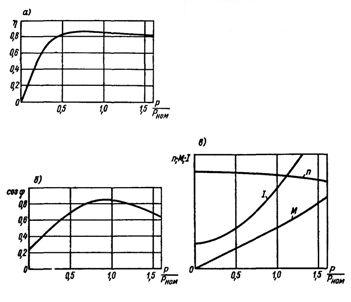Energy loss and efficiency of induction motors
 In an electric motor, when converting one form of energy into another, some of the energy is lost in the form of heat dissipated in various parts of the motor. Electric motors have loss of energy three types: winding losses, steel losses and mechanical losses… In addition, there are minor additional losses.
In an electric motor, when converting one form of energy into another, some of the energy is lost in the form of heat dissipated in various parts of the motor. Electric motors have loss of energy three types: winding losses, steel losses and mechanical losses… In addition, there are minor additional losses.
Loss of energy in asynchronous engine consider using his energy diagram (Fig. 1). In the diagram, P1 is the power supplied to the motor stator from the mains. The bulk of this power frame, minus stator losses, is transmitted electromagnetically to the rotor through the gap. It is called Ram electromagnetic power.
Rice. 1. Motor power diagram
The power loss in the stator is the sum of the power loss in its winding Ptom 1 = m1 NS r1 NS I12 and steel losses Pc1. Power Pc1 is the eddy current reversal losses and stator core magnetization.
There are also steel losses in the induction motor rotor core, but these are small and may not be taken into account.This is due to the fact that the speed of rotation of the magnetic flux relative to the stator n0 times the speed of rotation of the magnetic flux relative to the rotor n0 — as the speed of the rotor of an asynchronous motor n corresponds to the stable part of the natural mechanical characteristic.
The mechanical power asynchronous motor Pmx developed on the rotor shaft is less than the electromagnetic power Pem by the power value Pabout 2 losses in the rotor winding:
Rmx = Ram — Pvol2
Motor shaft power:
P2 = Pmx — strmx,
where strmx is the force of mechanical losses equal to the sum of friction losses in the bearings, friction of the rotating parts against the air (ventilation losses) and friction of the brushes on the rings (for motors with a phase rotor).
Electromagnetic and mechanical power are equal:
Aries = ω0M, Pmx = ωM,
where ω0 and ω — synchronous speed and rotation speed of the motor rotor; M is the moment developed by the motor, that is, the moment with which the rotating magnetic field acts on the rotor.
From these expressions it follows that the power losses in the rotor winding:

or Pokolo 2 = with NS PEm
In cases where the active resistance r2 of the phase of the rotor winding is known, the losses in this winding can also be found from the expression Pabout 2 = m2NS r2NS I22.
In asynchronous electric motors, there are also additional losses due to the gearing of the rotor and stator, eddy currents in various structural units of the motor and other reasons. At full load losses of the motor, Pd is assumed equal to 0.5% of its rated power.
Coefficient of efficiency (COP) of an induction motor:
η = P2 / P1 = (P1 — (Pc — Pc — Pmx — Pd)) / P1,
where Rob = About1 + Rob2 — total power losses in the stator and rotor windings of an asynchronous motor.
Since the total loss depends on the load, the efficiency of the induction motor is also a function of the load.
In fig. 2 a curve η = e(P / Pnom) is given, where P / Pnom — relative power.
Rice. 2. Performance characteristics of the induction motor
The induction motor is designed to maximize its efficiency ηmax is held at a load slightly less than nominal. The efficiency of the motor is quite high and in a wide range of loads (Fig. 2, a). For most modern asynchronous motors, the efficiency is 80-90%, and for powerful motors 90-96%.


